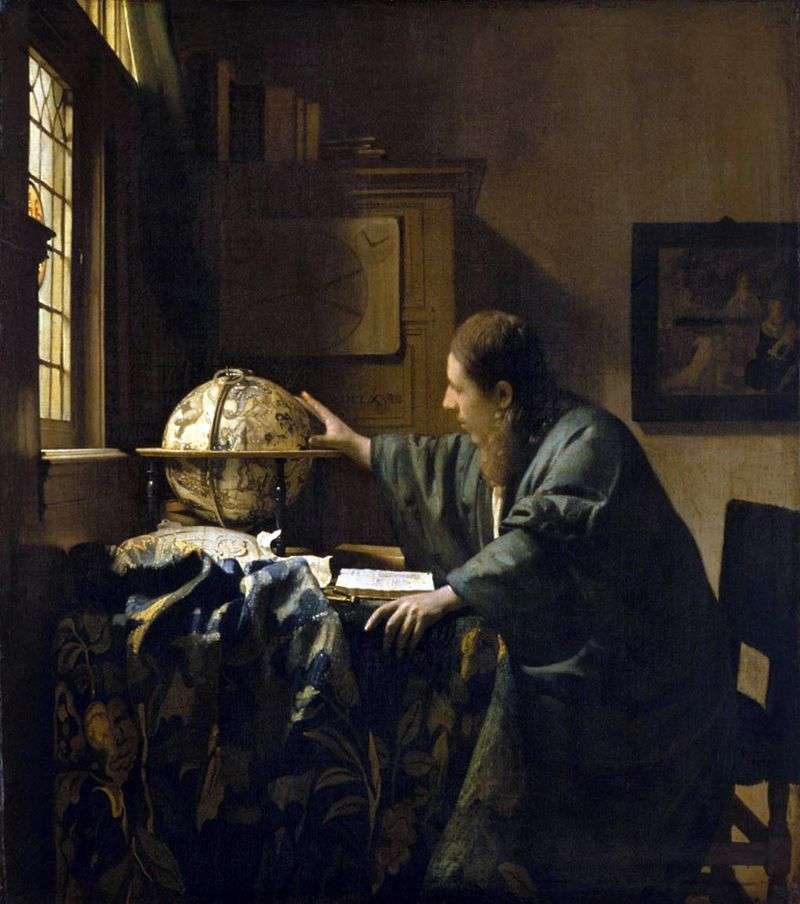
Picture of the Netherlands artist Jan Vermeer Delft “Astronomer”. The size of the picture is 50 x 45 cm, canvas, oil. In 1668-1669 an unknown person at the age of approximately thirty-five years posed for two paintings by Vermeer, revealing the image of a scientist, a worker in science. At the same time, the future famous scientist and inventor of the microscope Antony van Leeuwenhoek, who was fond of polishing glass and creating lenses, was given the position of a surveyor in Delft. It is possible that it was Leuvenuk, as a native of Delft and the founder of scientific microscopy, who could pose for these paintings of Vermeer as a scientist.
Today these paintings are called “Astronomer” and “Geographer”, although they did not always bear these names. In 1713, at an auction, they were sold as “Work showing mathematics, the artist Van der Meer” and “similar.” Several years later they appeared on the auction under the name “Astrologer” and “similar.” There is no doubt that Vermeer portrayed a man who devoted himself to scientific research. The “astronomer” is presented without a telescope, but his hand touches the globe of the celestial sphere. On the closet is a dozen books, a table with three circles – one big and two small, perhaps this is a table for calculations, but the assignment is now vague.
Books, maps, astrolabes, compasses are inherent attributes of the scientist of those years. The paintings bear a certain style of stylization, with indispensable draperies, dramatic contrast of illumination, but Vermeer so accurately wrote this picture that according to the illustration in the book that lies before the astronomer, the researchers were able to identify it. This – the second edition of the treatise of 1621 “On the study and observation of the stars” Adrian Metius. The book is open on page 111, where it says that to study the stars you need not only knowledge of geometry, the use of mechanical tools, but also “inspiration from God.”
In general, the picture represents a compromise between the wishes of the customer and the ideas of the artist. Some of the items shown to Vermeer, most likely, had to be borrowed – a compass and a special square for measuring the height of objects or the angle of the sun.
